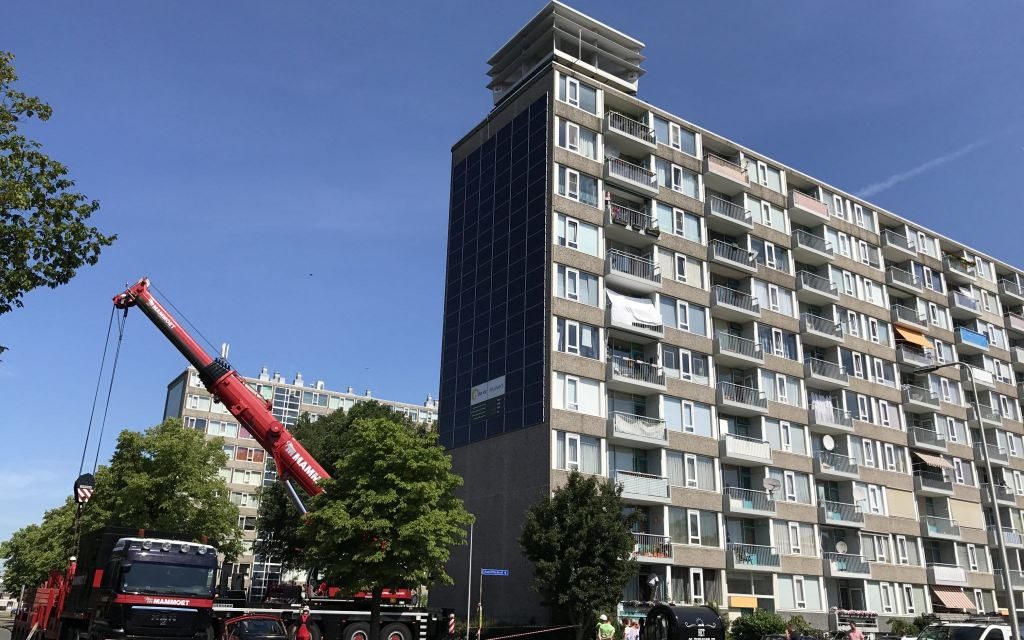Recent calculations and research coming from the Netherlands show that, under the right circumstances, net zero energy can be possible for high-rise buildings up to 11 storeys.
The Dutch project ‘Homeowner Associations to Net Zero Energy’ has been seeking ways to help private homeowners retrofit to net zero energy standard.
Because many Private Homeowner Associations in the Netherlands consist of several apartments in one building, net zero energy solutions are then needed for entire high-rise apartment buildings. This has historically proved a stumbling block. However, the project’s research is now pointing towards hopeful, if challenging solutions.
A challenging project
Net zero energy retrofits are already a valuable and beneficial solution for housing associations’ stock of terraced houses, especially in the Netherlands. But a significant challenge has always been that similar solutions were not available for high-rise apartment buildings. An important aspect of the project’s research was to see if, and how many storeys up, a retrofit could be taken, while still having on-site renewables catering for some or all of the energy used for heating, ventilation and household appliances. The biggest hurdle on tall buildings is the lack of available roof surface to place sufficient solar panels to achieve net zero standard.
Possible up to 11 storeys in the right conditions
The project’s calculations showed that a net zero energy renovation up to 11 storeys is possible. However, this is only the case when a 6 metre high Powernest (an innovative wind turbine with solar panels) is placed on top of the building and the facades, as well as carport roofs, are covered with solar panels. The building must also be optimally oriented within 50 km from a coast, and the PowerNest should not be hindered by other surrounding high buildings. If these conditions are met, then net zero is theoretically possible for 11 storey residential buildings. It should be noted that a net zero energy all-electric solution based on solar panels covering all facades and carports can already work for buildings up to 6 storeys without the need for a PowerNest.
How can we go even higher than 11 storeys?
The Powernest is undoubtedly an exciting innovation opening up potential possibilities. But we don’t want to stop at 11 storeys. By challenging the industry on how we can retrofit even higher apartment buildings to net zero energy, we drive the common thinking on improving solutions that would also benefit less tall buildings, making retrofits in less ideal conditions more feasible and affordable over time.
One way to do this may be to decrease a building’s energy demand in combination with Powernest use. Energy demand could be reduced through the use of different heat pumps (like CO2 based ones) with a better annual performance for space heating and hot water. Or with future use of higher performing solar panels, or by using combined solar pv and solar thermal installations. Current laboratory tests in the field of solar energy in the built environment predict at most a factor of 2 improvement in the coming decades, whereas the limit of the maximum generation capacity with urban wind turbines has almost been achieved with the PowerNest 2.0.
Another solution is to reduce energy consumption through the use of high energy efficient household appliances and possibly using direct current instead of alternate current to avoid conversion losses, and to focus on the development of even higher efficiency appliances than are available now.
The solution: draw renewable energy from elsewhere
To make net zero energy possible for high-rise buildings, a solution could be to draw renewable energy for heating, hot water and household appliances from elsewhere close-by or even off the grid. If the energy demand for space heating and hot water is covered by an external sustainable heat supply instead of the efficient heat pumps, more residential levels can be added. The solar energy previously required for the heat pumps is then available for household appliances elsewhere in the building. In the case where a PowerNest is placed on the roof, it is even possible to achieve 17 levels in this optimal theoretical example.
From this experiment, we can conclude that net zero energy is possible for high-rise buildings. A combination of new, innovative technology and renewable energy from elsewhere will enable a push on the current limitations in terms of how high we can go with this level of performance.

